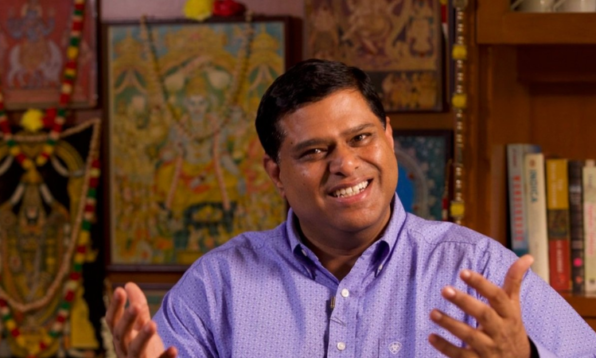Villains are not born, they are made, and Ravan is a prime example of that. Author Sundar Nathan explores that in his fantasy series The Naraka Cycle. In an interesting conversation with Nathan about his book, Ravan’s Trial, the first part of the series, the author shared unique insights on his journey with mythology. He brilliantly brings out diverse scenarios of religion, romance and fantasy from the epics Ramayana and Mahabharata. Nathan further attempts to make it realistic in today’s world so we easily connect with our ancient roots.
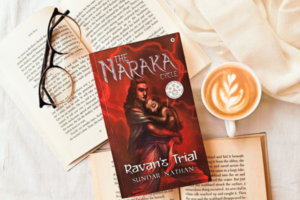
Ravan’s journey
Sundar Nathan’s idea of a heroic villain emanates from psychologist Carl Jung’s concept of shadow selves — a notion that says we all have the capacity for both good and evil. As Nathan puts it, “I feel like we make micro-decisions along the way, every day, to move towards either shadow or light”. The title, Ravan’s Trial, compels us to sympathise with the character as if he has lived a challenging life. Was he born a demon? Ravan was born to the Sage Vishravan and an Asura mother, Kaikesi. Nathan attributes Ravan’s dark adulthood to his unfavourable childhood. He says, “Ravan’s father has always been a distant figure in his life”, depriving him of many crucial life lessons.
The road to evil
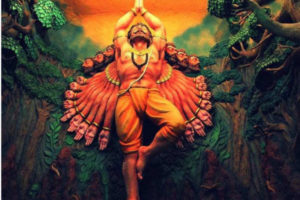
Sundar Nathan gives insights into Ravan’s psychology, making him the villain we know today. He shares that “Ravan was considered a wise ruler of Lanka, and his subjects were really happy with him”. Moreover, he was a devoted follower of Lord Shiva and did years of tapasya to appease the god and receive a boon. However, this eventually drove him towards a sinful life as the newfound power made him arrogant. Nathan shares how “Ravan is repeatedly overcome by lust”, so much so that he didn’t even spare his niece-in-law, Rambha. He brutally raped her, which angered her husband, Nalakubara, who ultimately cursed him that “his head would split into several pieces if he committed violence on a woman out of lust.” And that’s how Ravan’s demonic actions overpowered his Brahmanical traits.
Imperfect humans of Mahabharata
The author further takes Mahabharata’s “rich 3D” characters to build on the theme of the making of a villain. According to Sundar Nathan, “the five Pandavas are aspects of each human being”. He tells us how “Yudhisthir, the Dharma Raja is a complex person with a proclivity for gambling, which is evil, but also has a great sense of justice and moral character”. Similarly, Vrikodara, aka Bheem, had the appetite of a wolf but knew dharma better than his eldest brother as he rightly fought to achieve a greater good than following every minor virtue.
Decoding Shakuni’s sins
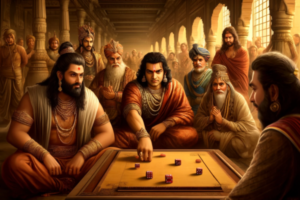
Gandhari’s brother and Duryodhana’s maternal uncle, Shakuni, is remembered as the mastermind behind the injustice faced by Pandavas. But do you know the backstory of Shakuni’s evil schemes? Sundar Nathan talks about how the Kauravas’ and Pandavas’ grandfather, Bheeshma, captured Shakuni’s kingdom. He even made Gandhari marry his blind son, Dhritarashtra. Nathan further reveals, “Bheeshma imprisoned Shakuni and his clansmen and only gave a grain of rice to each of them” as a daily meal. This frustrated Shakuni to the point that he used his nephews to defeat Bheeshma through the game of dice. But how did he become so powerful with the dice?
Shakuni’s army sacrificed their appetite and life by giving their grain of rice to him so he survives to avenge their death. Nathan interestingly shares how “Shakuni ground the bones of his clansmen and made it into a pair of dice”. This ensured that “all of their prayers and powers are inside that dice so when Shakuni rolls the dice, he can never lose”. That’s how Nathan proves each character’s motivations and struggles to pursue both good and evil.
The modern relevance
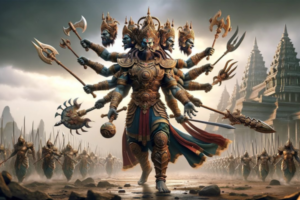
Sundar Nathan beautifully describes a villain’s journey in The Naraka Cycle through the realistic elements of science and spirituality. He firmly holds the mythological roots to create a villain that appeals to the current generation. Nathan represents Ravan’s character as “an actual teenager growing up in a complex environment who’s deluded with information from everywhere”. He relates it to Ravan’s wisdom about ten different schools of knowledge, which is also the real reason behind his name, Dashanan, and not his ten heads. In the modern context, it is the influence of Artificial Intelligence (AI) on Gen Z that’s driving them towards both shadow and light.
It is easy to brand someone as a hero or villain purely based on their actions. But the real story lies in what made a person evil or heroic, and that’s the tale that Sundar Nathan explores in his books.
Featured Image Source
Related: Devi: The Spiritual Journey of Love: Prajeet Budhale’s Novel Is A Blend Of Romance And Spirituality
 Web Stories
Web Stories
